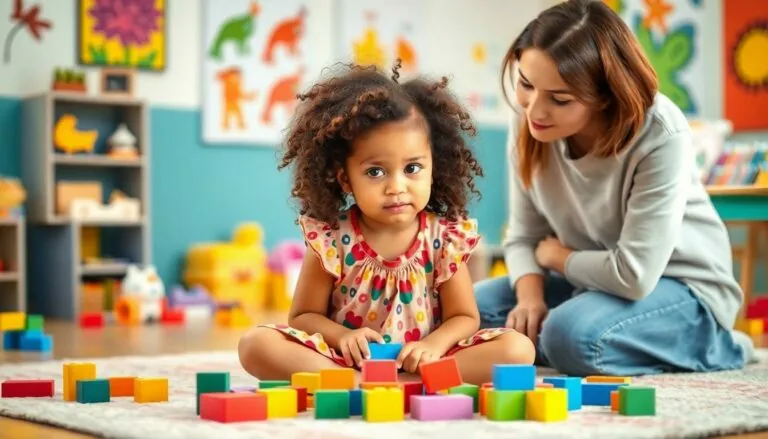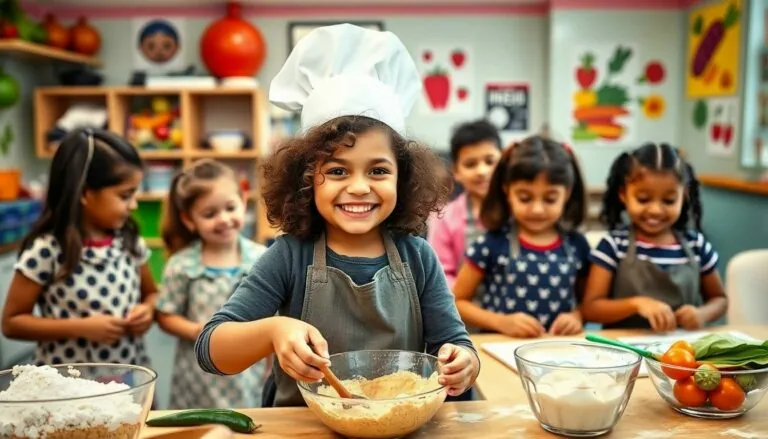Teaching kids to cook isn’t just about creating future master chefs – it’s about building confidence independence and lifelong healthy habits. A well-designed cookbook for children can transform kitchen time into an exciting adventure filled with measuring mixing and magical culinary discoveries.
Today’s kids’ cookbooks go beyond basic recipes offering colorful illustrations step-by-step instructions and safety tips that make cooking both fun and educational. These specially crafted books help young chefs develop essential life skills while fostering creativity and an appreciation for nutritious food. From simple smoothies to junior-chef pasta dishes there’s a recipe to spark every child’s interest and build their kitchen confidence.
Table of Contents
ToggleWhy Cooking Books for Kids Matter
Cooking books designed for children serve as essential tools for developing culinary skills and fostering independence in the kitchen. These specialized resources transform cooking into an engaging educational experience while prioritizing safety and comprehension.
Benefits of Teaching Children to Cook
Teaching children to cook creates profound impacts on their development and well-being. Kids who learn cooking skills demonstrate improved math abilities through measuring ingredients and following recipe ratios. The kitchen environment enhances sensory processing as children touch ingredients, smell spices, observe color changes during cooking. Children who participate in meal preparation show increased willingness to try new foods and make healthier food choices. Studies indicate that kids who cook with their families have higher self-esteem and stronger family connections.
Building Life Skills Through Cooking
Cooking activities develop critical thinking abilities when children plan meals, organize ingredients and manage time effectively. Young chefs learn responsibility by handling kitchen tools safely, cleaning workspaces and following food safety protocols. The kitchen becomes a laboratory for practical science lessons as children observe chemical reactions like rising dough or caramelizing sugar. Recipe following strengthens reading comprehension skills while ingredient substitutions encourage creative problem-solving. Regular cooking practice builds concentration, patience and attention to detail – essential skills that transfer to academic success and personal growth.
Best Cooking Books for Different Age Groups
Age-appropriate cookbooks create engaging culinary experiences that match children’s developmental stages. Each category focuses on specific skills that grow with the child’s abilities.
Ages 3-6: First Kitchen Adventures
Picture-based cookbooks introduce toddlers to basic kitchen concepts through colorful illustrations. Books like “Pretend Soup” by Mollie Katzen use simple recipes with 3-4 ingredients such as fruit smoothies sandwich faces. Visual recipe cards feature step-by-step photographs showing young children performing safe kitchen tasks like stirring mixing pouring. Parent-child cookbooks emphasize sensory exploration through touch-and-feel elements texture recognition activities. Books in this category incorporate counting exercises shape identification color matching to develop early math literacy skills.
Ages 7-10: Building Basic Skills
Elementary-age cookbooks focus on fundamental cooking techniques with clear written instructions alongside illustrations. Popular titles like “Kid Chef Junior” introduce measuring fractions knife safety proper kitchen tool handling. Recipes include 5-7 ingredients requiring basic techniques such as whisking kneading spreading. These books incorporate science experiments explaining chemical reactions in baking temperature effects on ingredients. Safety sections highlight proper hand washing food storage kitchen equipment care with child-friendly explanations.
Ages 11+: Advanced Junior Chefs
Cookbooks for older children present complex recipes requiring multiple steps advanced techniques kitchen equipment. Books like “The Complete Cookbook for Young Chefs” feature international cuisine baking projects meal planning concepts. Recipes include 8-12 ingredients involving skills like sautéing roasting sauce making pastry preparation. These guides emphasize independent cooking with sections on grocery shopping budgeting ingredient substitutions. Advanced cookbooks incorporate nutrition information kitchen chemistry food culture discussions to deepen culinary understanding.
Essential Features of Children’s Cookbooks
Children’s cookbooks incorporate specific elements designed to make cooking accessible engaging for young chefs. These features ensure a safe educational experience while building confidence in the kitchen.
Safety Instructions and Guidelines
Safety features stand at the forefront of children’s cookbooks with clear warnings about hot surfaces kitchen tools adult supervision requirements. Eye-catching safety symbols indicate steps requiring parental assistance such as using sharp knives operating appliances handling hot items. Modern cookbooks include labeled danger zones in recipe steps kitchen safety checklists food hygiene basics. Special sections highlight proper hand washing techniques safe food storage guidelines appropriate kitchen tool handling procedures.
Visual Step-by-Step Instructions
Colorful illustrations break down complex cooking processes into manageable segments accompanied by clear numbered steps. Large photographs demonstrate proper techniques tool usage ingredient preparation methods. Cookbooks utilize visual markers like arrows checkboxes progress bars to guide children through each recipe phase. Graphics showcase correct measuring techniques proper stirring methods safe cutting skills. Picture-based ingredient lists help young chefs identify gather necessary components before starting recipes.
Kid-Friendly Recipe Difficulty Levels
Recipe categorization systems use symbols stars numbers to indicate complexity levels ranging from beginner to advanced. Entry-level recipes focus on basic tasks like mixing spreading assembling no-cook items. Intermediate recipes introduce simple heating tasks measuring skills basic knife work. Advanced recipes incorporate multiple techniques timing management temperature control. Each difficulty level builds upon previously learned skills creating a progressive learning experience. Color coding systems help children select recipes matching their current skill abilities confidence levels.
Popular Themes in Children’s Cookbooks
Children’s cookbooks incorporate engaging themes that inspire young chefs to explore cooking through different lenses. Each theme creates unique learning opportunities while making the cooking experience more entertaining.
Fun with Baking
Baking-themed cookbooks capture children’s imagination through creative decorating projects like rainbow cupcakes, animal-shaped cookies, and holiday treats. These books feature recipes with colorful frosting techniques, edible decorations, and simple fondant crafts that transform basic baked goods into edible art. Many include scientific explanations about how ingredients react during baking, teaching concepts like leavening agents through hands-on experimentation. Popular projects focus on special occasions such as birthdays, seasonal celebrations, and themed parties.
Healthy Eating Made Fun
Health-focused cookbooks transform nutritious ingredients into appealing dishes that excite young chefs about wholesome eating. These books include recipes for fruit-based desserts, vegetable-packed smoothies, and protein-rich snacks that kids enjoy preparing. Creative presentations turn ordinary ingredients into playful designs like vegetable faces, rainbow salads, and garden-themed platters. Recipe sections often group foods by color or nutritional benefits, teaching children about balanced meals through interactive cooking activities.
International Cuisine for Kids
Global cooking themes introduce children to diverse culinary traditions through kid-friendly versions of international dishes. These cookbooks feature recipes from multiple regions including Italian pasta dishes, Mexican tacos, Japanese sushi rolls, and Indian curries. Cultural context accompanies each recipe through facts about traditional ingredients, cooking methods, and eating customs. Maps, illustrations, and cultural stories enhance the learning experience while building appreciation for different food traditions.
Tips for Using Cooking Books with Children
Implementing cooking books effectively with children requires strategic planning and thoughtful execution. These practical guidelines enhance the learning experience while maintaining safety and enjoyment in the kitchen.
Creating a Safe Cooking Environment
Kitchen safety starts with proper adult supervision and clear workspace organization. Children need designated prep areas at appropriate heights using non-slip mats or sturdy step stools. Sharp utensils stay in a separate zone accessible only to adults while kids use child-safe alternatives like plastic knives. Kitchen tools match the child’s age level such as smaller mixing bowls for tiny hands. A first-aid kit remains within reach yet stored away from cooking areas. Protective gear includes child-sized oven mitts heat-resistant aprons fitted to prevent tripping. Pre-measuring ingredients into containers reduces spills accidents.
Making Learning Fun in the Kitchen
Interactive cooking activities transform recipe following into engaging educational experiences. Kids measure ingredients using colorful measuring cups shaped like animals or characters. Timer games turn waiting periods into opportunities for kitchen science experiments. Recipe cards feature stickers or stamps to mark completed steps encouraging progress tracking. Children collect achievement badges for mastering new techniques like whisking or folding. Themed cooking sessions align with holidays seasons or favorite stories. Digital recipe companions offer sound effects cooking animations bringing instructions to life. Age-appropriate kitchen tools come in bright colors patterns making basic tasks exciting engaging.
Conclusion
Getting kids in the kitchen through engaging cookbooks is one of the most valuable investments parents can make in their children’s future. These specially designed cooking guides do more than teach culinary skills – they’re gateways to confidence math proficiency cultural awareness and healthy eating habits.
A well-chosen cookbook becomes a trusted companion in a child’s culinary journey sparking creativity and independence while building essential life skills. With age-appropriate recipes safety guidelines and engaging themes these resources transform cooking from a basic life skill into an exciting educational adventure that’ll benefit children throughout their lives.







